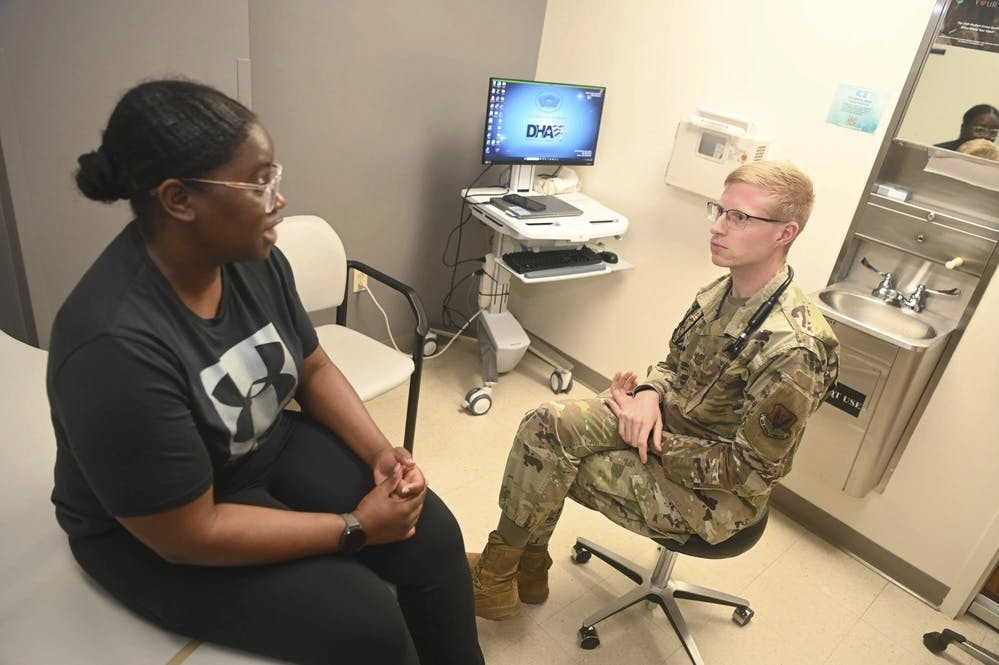CDC Updates Public Health Data Strategy
Accelerating data sharing through capabilities like electronic case reporting make up a large portion of the new two-year plan.

The Centers for Disease Control and Prevention (CDC) updated its Public Health Data Strategy to focus on new goals including expanding electronic case reporting (eCR). The strategy outlines actionable steps as part of CDC’s broader data modernization effort to better detect and respond to public health threats.
“[The data strategy] really articulates the future vision that we’re moving towards — embedding a lot of lessons learned about how we want to strengthen public health data,” said CDC Director Mandy Cohen during Kaiser Permanente’s Health Action Summit Thursday.
The first iteration of the plan launched in 2023 included an initial set of 15 milestones for strengthening public health data systems under four goals: strengthening core data, accelerating access to analytics and automated solutions, visualize and share data, and advance interoperability.
The agency met most of its milestones, including improving real-time data reporting from hospital emergency departments with the National Syndromic Surveillance Program and great progress with automated eCR.
Electronic reporting supports the first goal of strengthening core data as it enables faster data sharing, which helps public health departments and CDC quickly identify disease trends in rural communities.
“We now have almost 33,000 facilities sending data directly in an automatic fashion to public health. And this is not to CDC, this is their frontline to state local partners, to see an expansion of the syndromic surveillance data,” CDC Office of Public Health Data, Surveillance, and Technology Director Dr. Jennifer Layden told GovCIO Media & Research during HIMSS last month.
Now in the new strategy, the agency aims to further accelerate eCR adoption among certain hospitals and jurisdictions.
During COVID, eCR enabled sharing information about notifiable symptoms between roughly 2oo state and local facilities. Layden said the strategy aims to increase the number of facilities that participate in data sharing, and will help increase the diversity of conditions that facilities can report, like respiratory virus.
“The good news is we went from having basically no one doing that just a few years ago in 2020. [We did] a lot of work during COVID, now we’re seeing a lot of different health facilities report that data, but it’s only about 30%. We got some work to do here and this is a big goal for us in 2024,” Cohen said.
Other new focuses in the updated plan include further interoperability, advancing health equity and bridging gaps in access to tools.
Layden cited the collaboration between CDC and Office of the National Coordinator for Health IT (ONC) to implement standards like the Trusted Exchange Framework and Common Agreement (TEFCA).
Cohen and other CDC researchers have called for more health care facilities to participate in data exchange by adopting capabilities like electronic case reporting and TEFCA.
Collaborations like these, they said in a New England of Journal Medicine article, will be integral to tackling public health issues.
“Investing in strong relationships and taking action together to protect health could better prepare an integrated health system to respond to the next major health emergency and improve the day-to-day health and well-being of the population,” the article said.
This is a carousel with manually rotating slides. Use Next and Previous buttons to navigate or jump to a slide with the slide dots
-

DOD Can No Longer Assume Superiority in Digital Warfare, Officials Warn
The DOD must make concerted efforts to address cyber vulnerabilities to maintain the tactical edge, military leaders said at HammerCon 2025.
4m read -

DHA CDAO Spearheads Master Data Catalog to Boost Transparency
Jesus Caban plans to boost DHA's data maturity through a new master data catalog, governance frameworks and inventory of tech tools.
5m read -

IHS Prepares to Deploy PATH EHR at Pilot Sites in 2026
IHS targets PATH EHR pilot in 2026, emphasizing governance, collaboration and interoperability as key pillars of the modernization strategy.
4m read -

IRS Makes Direct File Code Public as Lawmakers Debate Program’s Fate
The agency sees the Direct File source code as beneficial to government digital services despite what happens with it in proposed budgets.
5m read -

A Look at Federal Zero Trust Transformation
Recent developments from CISA and DOD show how government is advancing zero trust quickly.
20m read -

FEHRM CTO Targets Two-Year Cloud Migration for Federal EHR
Lance Scott touts new EHR tech advancements, including cloud migration, expanded data exchange and AI integration to improve care delivery.
4m read -

New Army Acquisition Plan Cites Autonomy, Predictive Analytics
Officials outline how the Army Transformation Initiative signals a broader shift toward efficiency with tech and acquisition reform.
4m read -

VHA’s AI Chief Led NIH’s New AI RFI
The agency's AI chief Gil Alterovitz helped develop a plan that hints at how NIH is charting the future of AI and biomedical research.
5m read -

DOE National Labs Launch New AI Tools for Operational Efficiency
The Energy Department's National Laboratories are using AI to increase operational efficiency and drive research efforts forward.
3m read -

VA Plans Future EHR Deployment on Facility Relationships
VA’s EHR program is expected to restart in 2026 and will plan deployment based on pre-existing relationships between facilities to drive interoperability.
21m watch -

Trump Taps Maj. Gen. John Bartrum to Lead VHA
Nominated for VA's top health role, Bartrum brings over four decades of military and public service to the agency.
3m read -

Human-AI Collaboration is Key to Secure Government Systems
Former CIA security chief emphasizes training and international standards for effective AI implementation.
23m watch
















